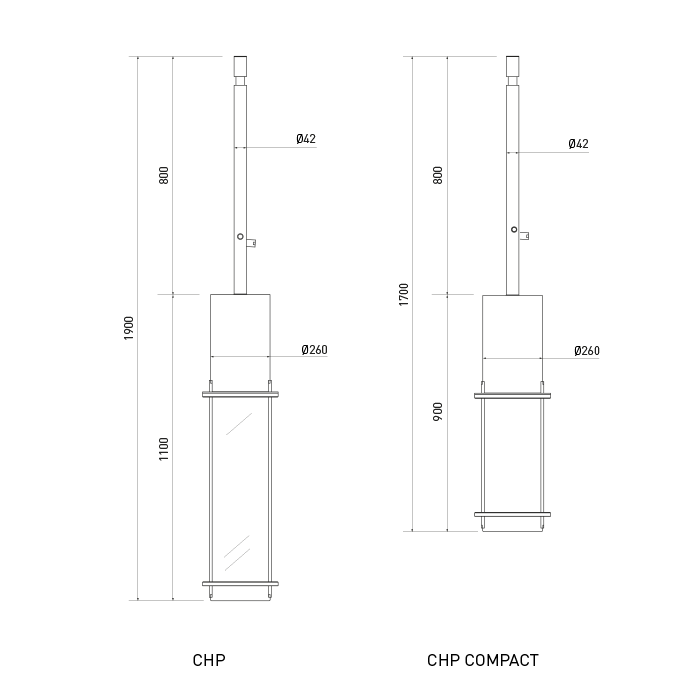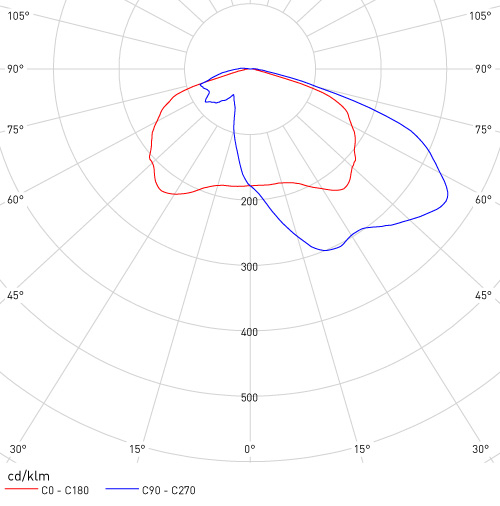CHP


CHP
PresentationA TRIBUTE TO THE ORIGINS
The Argand lamp was a revolutionary design of the late eighteenth and early nineteenth centuries, which triggered a lighting and aesthetic paradigm change with the integration of a cylindrical light body. The CHP series reinterprets this concept, blending tradition and modernity.
ORIGIN AND EVOLUTION
By retrieving the essence of historical cylindrical light bodies such as the Argand lamp, the CHP series humanizes the night scene, evoking nostalgia of a bygone era reborn as urban authenticity. A purity of lines and proportions balances the whole, enhancing the real character of historic environments, without interfering with architectural value.
The design was conceived by renowned Spanish architect, Jesús Fole, and was named as part of the best technical lighting concept in Spain by prestigious magazine, Iluminet.
MATERIALS AND STRUCTURE
The CHP lantern body consists of an AISI304 or AISI316 Stainless Steel structure to prevent the degrading action of highly aggressive environments, such as coastal areas.
A circular frame of anodized, extruded aluminium 6063-T5 is incorporated as a LED module heat sink.
This series is characterized by a water tightness rating of IP66, and its light body comprises a LED beacon made of high impact PMMA, highly resistant to UV radiation.
APPLICATIONS, COLUMNS AND BRACKETS
The CHP series can be integrated in a single, double, triple or quadruple column, as well as in a bracket or catenary system.
The CHP column and arm are made of AISI 304 or AISI 316L Stainless Steel alloys distinguished by their excellent performance against corrosion, providing the unit with an appropriate level of resistance against the degrading action of aggressive urban environments.
Technical keys



The CHP lamp is based on the principle of direct thermal dissipation between the LED PCB and the compact aluminium chassis. The dissipation body comprises a continuous heat pipe of anodized aluminium 6063-T6, which achieves thermal conductivity levels of 200 W/metre Kelvin, compared to 130 W/metre Kelvin of aluminium injection. The low porosity of anodized aluminium plus a thermal pad over the contact surface between the PCB and the dissipation body significantly reduce the diode’s junction temperature.
According to the US Energy Agency, relief on the upper surface of the fixture severely hinders the dissipation process that takes place by convection, becoming a critical element for performance and life.
To overcome this challenge and to enhance the natural self-cleaning process, SETGA has equipped the CHP lamp with a small and completely uniform upper surface, thus preventing dirt accumulation, and the ensuing obstruction and inefficiency of the thermal dissipation system.
Descriptive views


Dimensions and installation
The CHP series recovers the cylindrical shape of the lanterns of yesteryear by combining it with the pure lines of modernity. This series is made up of the CHP and the CHP Compact, same lantern but of less length.
Its design is designed to work both in arms to facade, as in catenary and even in different column combinations. Its efficiency and easy maintenance make this lamp an optimal option for an urban environment.
The installation of the CHP lantern, both normal and Compact, is reduced to its placement on the corresponding arm, so that its central axis is perpendicular to the ground.








Iconic projects

BERGEN (LIMBURG)
Bergen (Limburg)
Creators

Jesús Fole
Architect and Product Designer (Pontevedra)


César Portela
Architect · National Architecture Award (Pontevedra)


Do you have a technical question?
Ask us


























